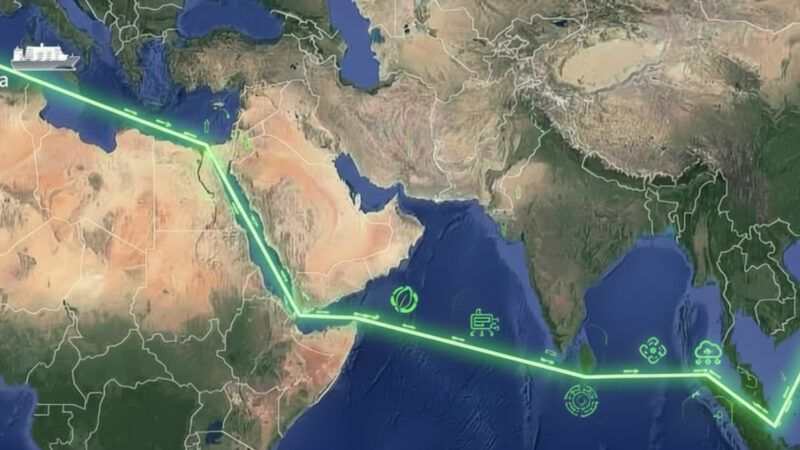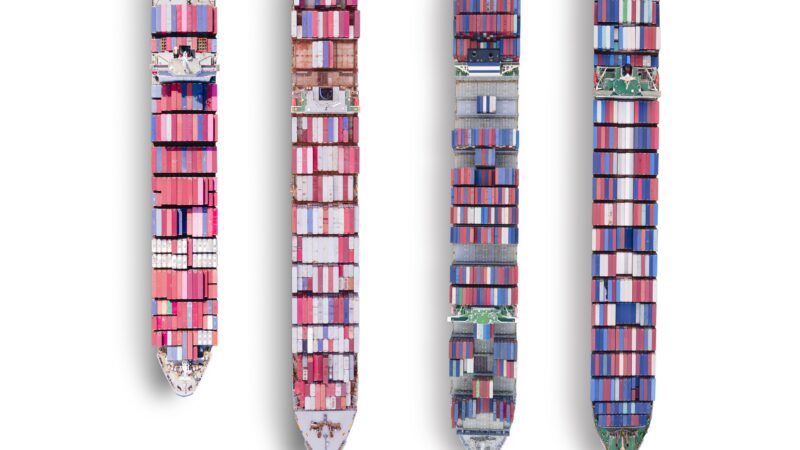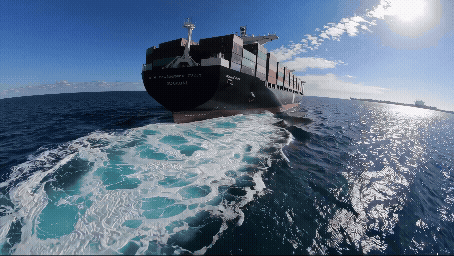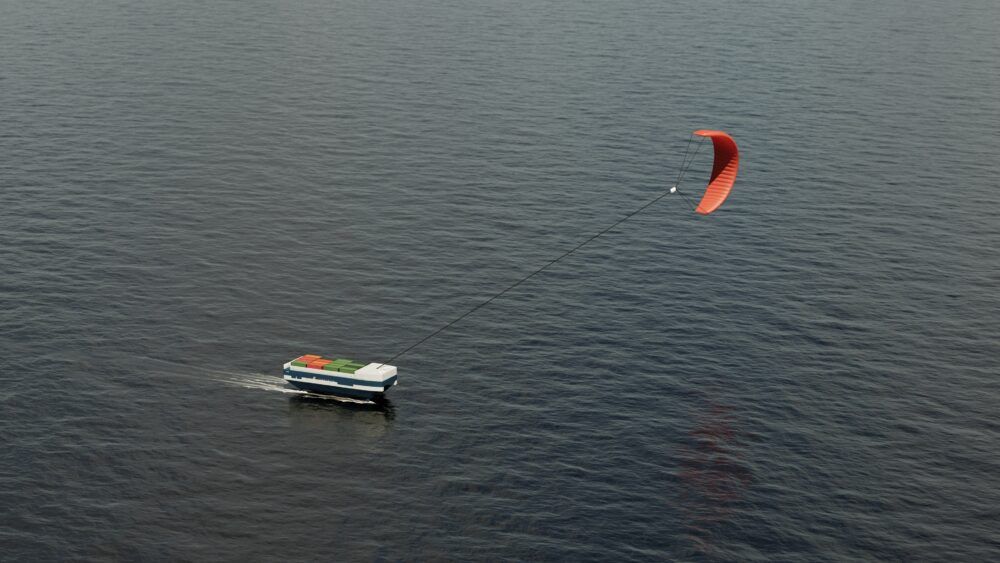
Ships powered by ammonia, LNG or kitesurfing sails: the latest in decarbonized commercial shipping
The need to decarbonize shipping is leading to the development of more and more alternative systems to power cargo ships. Initiatives include electric ships, engines that run on ammonia or LNG, and even small autonomous vehicles that harness wind power with systems that mimic kitesurfing sails. We take a look at what's new.

Freighters' route to decarbonization
The target set by the International Maritime Organization (IMO) to reduce greenhouse gas emissions from shipping by at least 40% by 2030 and 70% by 2050 (based on 2008 levels) sends a very clear message to the industry: changes need to be made, and these changes need to be made urgently.
Today, more than 80% of the goods traded worldwide travel by ship, on large container ships that are mostly powered by fossil fuels.
As a result, shipping accounts for 3% of global greenhouse gas emissions.
Decarbonizing maritime transport is complicated, but it is also essential to achieve the objectives set out in the Paris Agreement and curb climate change. One of the main challenges to achieve this is to develop and implement alternative propulsion systems for container ships, which will allow progress towards a cleaner and more sustainable transport model.
More than 80% of the goods traded worldwide travel by ship, on large container ships that are mostly powered by fossil fuels. As a result, shipping accounts for 3% of global greenhouse gas emissions.
Companies and organizations that take the lead in the race to find solutions face significant challenges, such as gaining the trust of investors. But they can also be the first to seize their opportunities.
“Economically, the transition to cleaner technologies offers significant opportunities. It reduces operating costs, fosters innovation and positions companies as leaders in an increasingly sustainability-focused marketplace”, says Tim Linnenweber, co-founder and COO of CargoKite, a German company that bases its business model on the energy that has always accompanied ships: wind power, in conversation with PierNext.
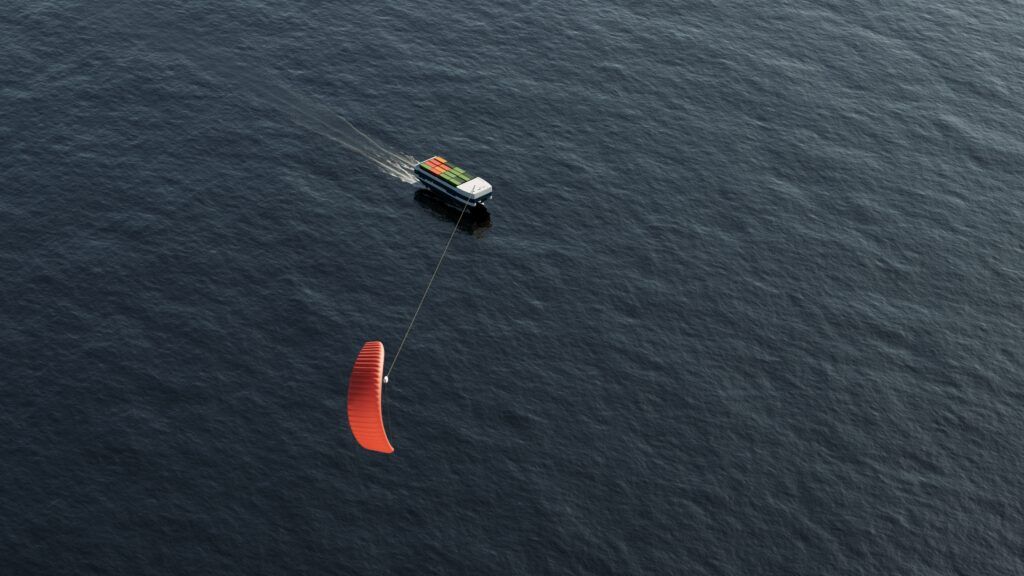
Sail-driven micro freighters
CargoKite's commitment is to develop autonomous micro freighters that harness wind energy by means of large sails ranging in size from 400 to 1,000 square meters. During crossings, these sails are positioned at an altitude of 100 to 300 meters to take advantage of offshore winds. For port operations and as a backup for times when the wind is not blowing, the ships are powered by hybrid engines (diesel and electric).
CargoKite thus proposes a system for harnessing the ocean's wind potential. “There are two main reasons why wind is so interesting for the maritime sector: it's clean and it's free”, Linnenweber says. “Then there's the nostalgic aspect: wind energy is attractive because it harnesses a resource that has always been fundamental to shipping. Wind powered the first ships and, today, modern technology allows us to rediscover this natural energy source in a highly efficient and innovative way”.
CargoKite's autonomous micro freighters harness wind energy thanks to large sails of between 400 and 1,000 square meters, which during crossings are positioned between 100 and 300 meters above sea level to take advantage of offshore winds.
As CargoKite's co-founder explains, ships that integrate wind propulsion systems can reduce their fuel consumption and CO2 emissions significantly. This helps to reduce costs and adapt to new environmental regulations. Another advantage of going for wind-powered micro-vessels is that they can operate between smaller ports, thus avoiding congestion in the larger ones.
“While our solution lies in decarbonization, it creates a disruption in the maritime sector that goes beyond emissions reduction”, explains Linnenweber, who adds that their system "significantly reduces the cost of operating a cargo ship by eliminating fuel and crew expenses, and facilitates the use of smaller vessels, breaking with the idea that ’bigger is better' in the maritime industry”.
And he points to another advantage of this type of commercial shipping: “Unlike traditional large ships, CargoKite's smaller, emission-free vessels can access a wider variety of ports, which greatly improves logistics flexibility and offers customers point-to-point shipping solutions. This opens up new markets for shipping, increases the attractiveness of decentralized areas for manufacturing and minimizes distances in supply chains.”
Currently, Cargo Kite's vessels are not yet operational. The project was born in 2019 at the Technical University of Munich, and the company was founded in 2022. The company plans to launch its first vehicle on the market in 2027.
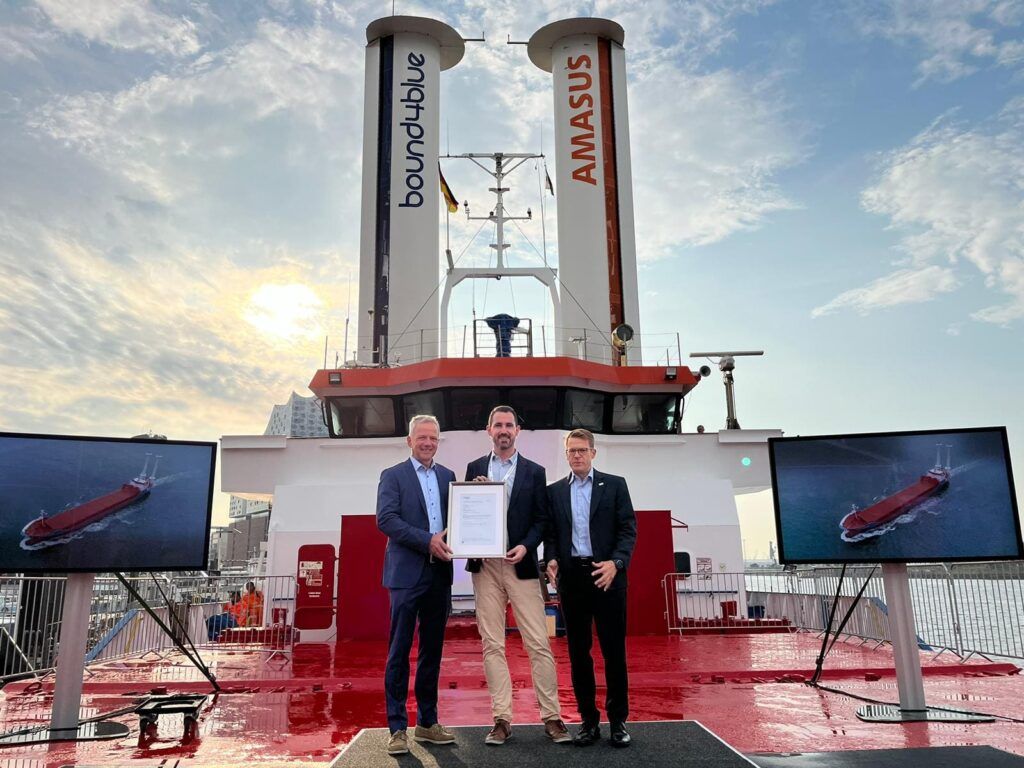
SPAIN'S BOUND4BLUE AND OTHER WIND-POWERED INITIATIVES
One of the most outstanding and advanced initiatives is the Spanish bound4blue. Its projects have already received a €4.1 million grant from the EU Innovation Fund program, awarded by CINEA (European Climate, Infrastructure and Environment Executive Agency), in a €22.4 million investment package that also includes corporate investors and venture capital funds. They also received 2.4 million euros from the EIC Accelerator Program of the Horizon Europe program.
Cristina Aleixendri, co-founder and COO of bound4blue, explained to PierNext that they have invested these funds in increasing the commercial level of their eSAIL® suction sail system. “The goal of this round is, among other things, to keep improving the system. That means continuing to innovate and continue to make improvements to the technology.”
Among the long and interesting list of projects that seek to use wind energy to reduce the use of fossil fuels is Wing Sail Mobility (WISAMO), an initiative by Michelin to propel cargo ships and other vessels with large inflatable sails thanks to a system of integrated fans. The technology was tested in the Port of Bilbao, with a 100-square-meter sail installed on the deck of the merchant ship MN Pélican. The company plans to commercialize larger sails of 800 square meters from 2026.
Another example is The Oceanbird, a type of ship developed by Wallenius Marine in collaboration with various Swedish organizations. Its solution involves integrating large rigid sails into the vessels and, according to the company itself, can reduce emissions from its operation by up to 90%.
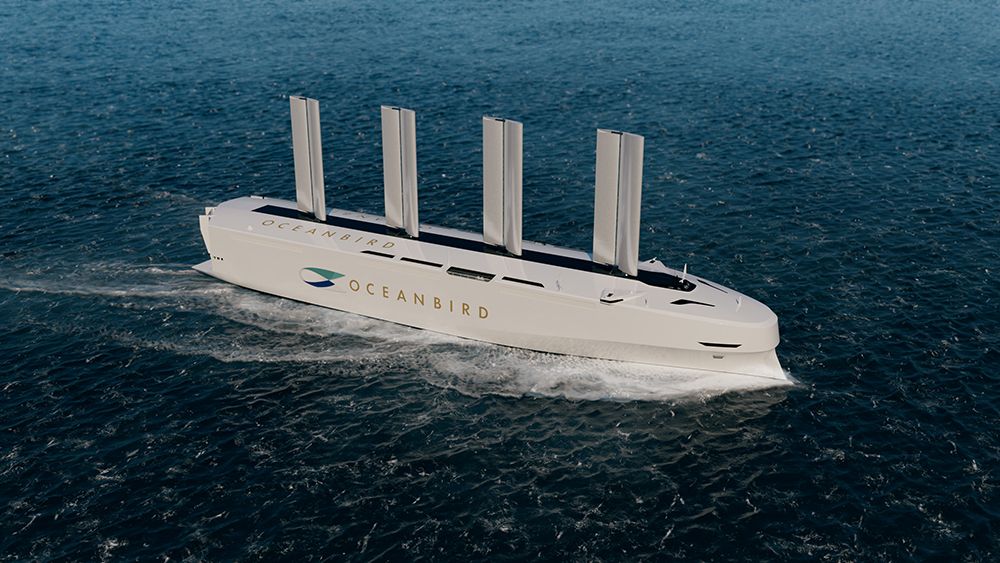
Other alternatives: electricity, ammonia and LNG
When it comes to naming large cargo ships already running on alternative fuels to fossil fuels, the most prominent today is undoubtedly the Greenwater 01. This vessel, developed by the Chinese government's state-owned China Ocean Shipping Company, better known as COSCO, holds the title of the world's largest electric cargo ship.
The Greenwater 01 began regular sailing in the second quarter of 2024. Prior to that, the Yara Birkeland, which in 2021 became the world's first electric, self-propelled container ship, was already in circulation. The vessel made its maiden voyage in the Oslo Fjord.
A year later, in 2022, the Fortescue Green Pioneer began the voyage that would make it the first ocean-going vessel to be powered by ammonia in combination with diesel. The development of this vessel was made possible through a collaboration with the Port of Singapore and other entities, which shows the need and at the same time the advantages of companies and ports collaborating to accelerate the implementation of alternative fuels.
According to the report 'Fuelling the Future of Shipping: Key Barriers to Scaling Zero-Emission Fuel Supply', prepared by the World Economic Forum (WEF) in collaboration with Boston Consulting Group, ammonia and methanol are options that have gained importance in the decarbonization race. Demand is increasing, but projects capable of producing them are finding it difficult to find investors.
Another fuel that is emerging as an option for powering freighters in a cleaner way (although it does not fully reduce emissions) is liquefied natural gas, or LNG. One of the largest LNG-powered containerships is the Jaques Saadè of the French company CMA CGM.
The future of freighter decarbonization
Among the actions needed to decarbonize shipping, the report 'Decarbonising Shipping: All Hands on Deck 2.0' points to those of increasing investment in research and development, aligning global regulatory frameworks to attract funding, and increasing coalitions to also encourage investment.
In order to advance in the introduction of alternatives to fossil fuels, accelerating investment and acceptance by the different agents involved is fundamental.
“The main challenges to advancing the decarbonization of the maritime industry are technological complexity, economic feasibility, regulatory uncertainty, infrastructure development and industry adoption”, Linnenweber says.
“Integrating advanced and sustainable technologies into existing vessels is technically and economically challenging. High upfront costs make it difficult to convince stakeholders of the long-term economic benefits. In addition, the constantly evolving regulatory landscape adds uncertainty, which complicates investment decisions”, he adds.
A regulatory landscape that may become even more complicated: in recent times, the use of nuclear energy to power container ships and cargo vessels in general has also been sounding very loudly, an issue that does not exactly generate consensus in the strategy of decarbonization of maritime transport. Because of its scope and applications, it deserves a special article.



